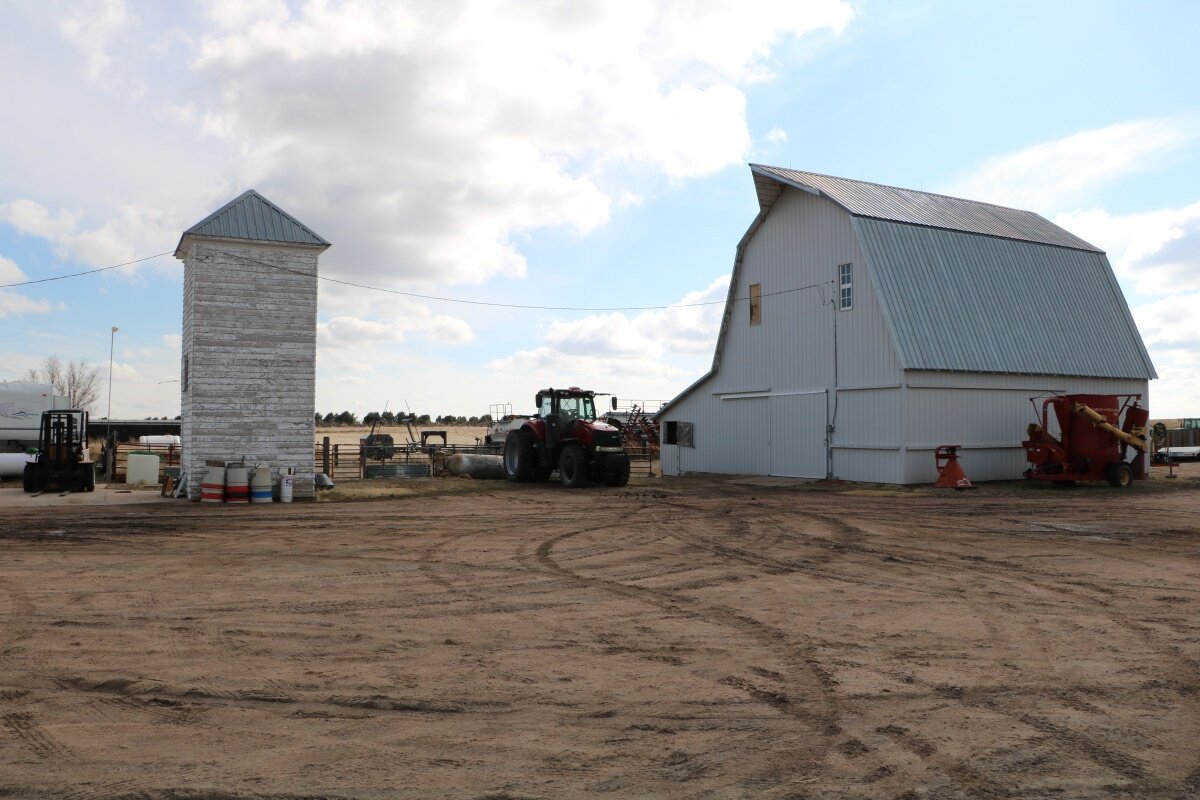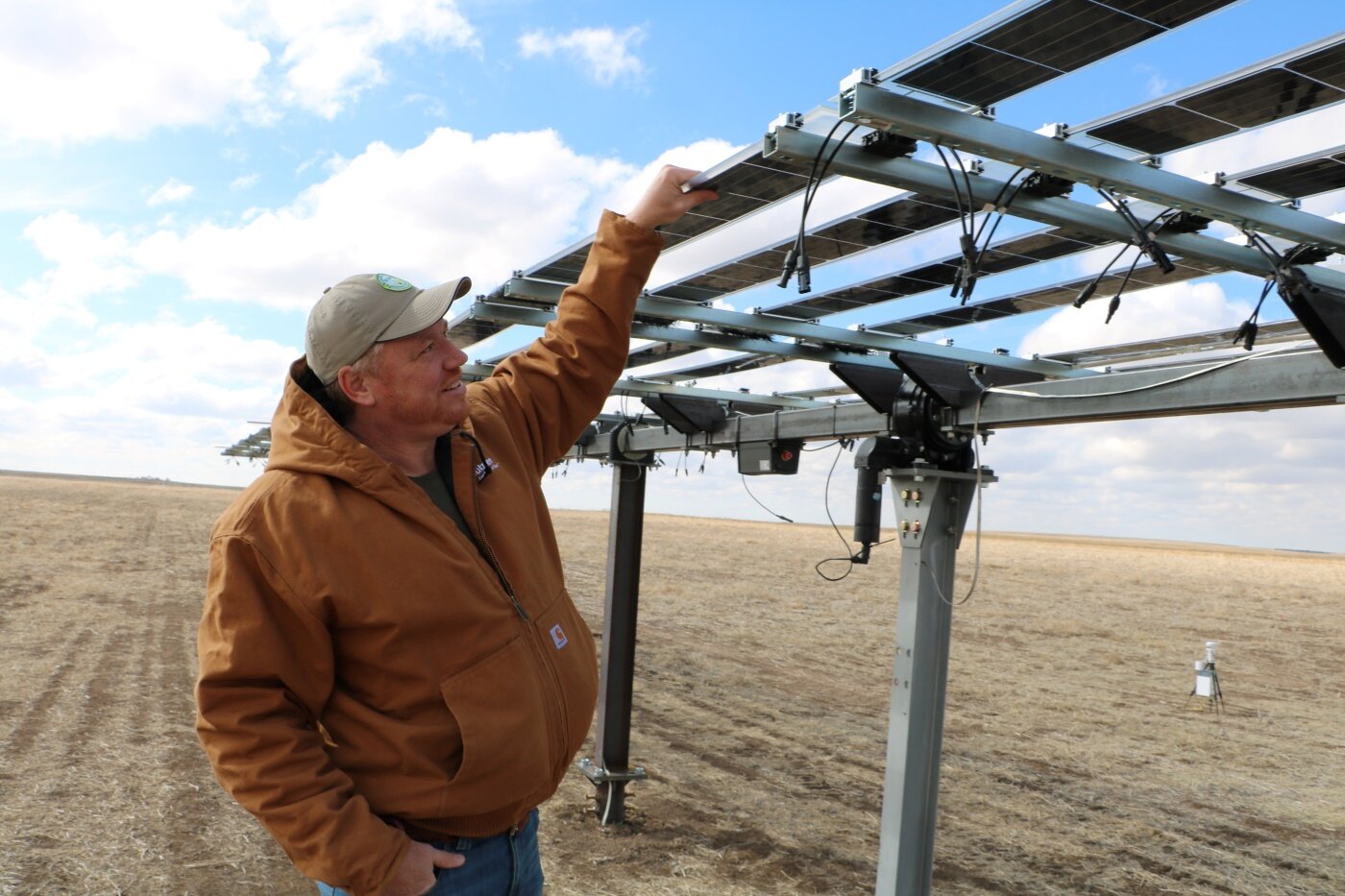Are Colorado's Northeastern Plains prepared for climate change?

Danny Wood has been growing wheat, millet, milo, and corn in Peetz, Colorado, in the Northeastern corner of the state for most of his life. It was about 15 years ago when he first noticed that the weather on his farm was starting to get weird.
“At first I just wondered what the heck was going on that it was getting so hot and, and dry,” Wood said.
Indeed, climate change has arrived for the eastern plains in the form of drought, extreme heat, wildfires, and hail - all threats to the region's overwhelmingly agricultural economy.
Wood said the changes are undeniable, and they've pushed him to make some changes of his own. He has switched to drought tolerant strains of his go-to crops. And, like many farmers on Colorado’s eastern plains, he stopped tilling his fields years ago, a practice that prevents topsoil loss, and increases soil organic matter, among other benefits.
“You just don't disturb the ground, and try not to lose the moisture that way,” Wood said.
But beyond those tweaks, he doesn't see his community doing all that much to prepare for the increasingly extreme weather that climate scientists predict for the eastern plains.
“You do not hear anybody around here talk about climate change,” Wood said.
The urban-rural climate change preparedness divide
That's a stark contrast to other parts of Colorado. Communities across the state - and especially in the mountain resort towns and along the Front Range - are actively addressing the new weather extremes. Dozens of local and county governments now have official climate action and resiliency plans and nearly every county in the state has filed a hazard mitigation plan that directly addresses climate change with the Federal Emergency Management Agency.
But the six counties that comprise Colorado’s Northeast Plains – namely, Morgan, Logan, Washington, Yuma, Phillips and Sedgwick Counties - seem to be lagging behind the rest of the state when it comes to mobilizing for climate change preparedness.
Those communities do not have any plans for climate action and resiliency and a regional hazard mitigation plan for Northeast Colorado makes no mention of climate change.
“That region is among the lowest in the state,” said Karim Ahmad, director of the climate team at the Colorado Health Institute. “Cities and counties in that region don't really have climate related plans, or strong commitments to climate adaptation.”
But that doesn't mean northeast Colorado residents are ignorant of the risks.
“There's no shortage of understanding in rural communities about the impacts of climate change. They are experiencing drought, which is increasing. They're experiencing more and more wildfires, and extreme heat.” said Marguerite Harden, the local resiliency manager at the Colorado Resiliency Office, which is housed within the state’s Department of Local Affairs. “No one would deny those impacts and how drought, for example, is going to seriously impact their agricultural sector, which is a huge part of their economy.”
In a recent statewide survey, The Colorado Health Institute asked Coloradans if their communities were prepared for climate disaster. In all of Colorado, the Northeast Plains stood out for its lack of confidence in local climate change preparedness. More than 60% of respondents in Northeast Colorado reported they did not think their community was prepared for climate change. That’s compared to about 47% statewide.

A view of Pfaltzgraff Farms in Haxtun, Colo., on March 14, 2024. Farmer Roy Pfaltzgraff has turned his family farm into a living climate adaptation laboratory of sorts, with lots of experimental farming techniques designed to help with climate adaptation.
Photo: Rae Solomon, KUNC
Why hasn't that local concern translated into an action plan for Northeast Colorado?
Agricultural communities, like Colorado’s Northeast plains have a distinct relationship with climate change compared to urban areas.
In more densely populated regions, meaningful climate preparedness is often focused on shoring up public resources. The Fort Collins Sustainability and Adaptation Plan, for instance, emphasizes climate change resiliency actions like updating municipal buildings and infrastructure and training staff in emergency management - goals best served by a centralized plan.
On the other hand, in agricultural areas, where public resources are scant and the primary risk of extreme weather is the potential impact on harvests, climate preparedness is more of a private pursuit: It’s about individual farmers, who independently control thousands of acres, making decisions about their own land. Climate preparedness in agricultural regions is about innovative farm management.
According to Iowa State University rural sociologist J. Arbuckle, a lot of those individual farmers have some cognitive dissonance around climate change.
“A majority of farmers believe that climate change is happening. But they do not attribute it to human activity,” Arbuckle said. “So, there's also uncertainty about whether they should take action.”
But even farmers who are convinced to take action on their land can struggle to change how they farm in practice.
“Taking a risk on something new that requires an investment and could potentially impact yields is really hard for farmers to do,” Arbuckle said. “The short term need for economic sustainability is at odds with the longer-term environmental sustainability in agriculture.”
Farming for Climate Adaptation
As the weather grows more unpredictable, some farmers are starting to find that the risk of doing something new on the farm could be outweighed by the risk of not doing enough to adapt.
That's the calculation for Roy Pfaltzgraff, a Logan County farmer who's become a bit of a climate adaptation fanatic, operating his farm in Haxtun like a giant climate farming laboratory.
“The longer we wait before we try to change, the harder it's going to be to get there,” Pfaltzgraff said. “If we make changes now, it might be painful now, but it's going to hurt a lot worse in the future.”
Pfaltzgraff takes a multi-pronged approach to climate adaptation on his land. In addition to no-till practices, he experiments with crops, like rice, that aren’t grown anywhere else in Colorado. And thanks to his many collaborations with researchers and scientists, his fields are dotted with whiz-bang climate-oriented technology, like a cutting-edge solar array that becomes a topsoil-saving windbreak when the gusts pick up.
“It's all about risk management,” Pfaltzgraff said. “If the climate is going to change and become more extreme, I need to spread my risk out as far as I possibly can.”

Roy Pfaltzgraff takes a closer look at a pilot solar array installation in one of his fields in Haxtun, Colo., on March 14, 2024. When the wind picks up, the array changes orientation to act as a windbreak to protect his fields from soil erosion. The installation is one of several climate adaptation experiments Pfaltzgraff runs on his land.
Photo: Rae Solomon, KUNC
Above all else, Pfaltzgraff is obsessed with tending to the health of his soil, which, according to him, is key to mitigating the risks of weather whiplash – the phenomenon of extreme drought followed by a heavy dump of rain.
“One of the most important things is to have a diversity of crops, not just a bunch of grasses like everybody else has.,” Pfaltzgraff said.
He raises between 10 and 18 crops each year - several times more than the typical Eastern Plains farmer.
“That gives us the ability to absorb some of these weather extremes,” he said.
He rotates his fields with alternative crops like buckwheat and camelina, a type of mustard used in sustainable jet fuel, that improve the soil. Another benefit of camelina - it matures in June - much earlier than his other crops, which helps him manage the risk of crop loss due to hail.
“It actually reduces the window that … all of our crops can be exposed to a single hailstorm,” Pfaltzgraff said. “By raising camelina, we reduce that window from about six weeks to about two weeks.”
Of course, all that experimentation creates new challenges for Pfaltzgraff, like finding markets for his unconventional crops, and trying to insure them. But Pfaltzgraff said that in the face of the potential ravages of climate change, the upsides are huge.
“I'm more prepared than anybody else that I know,” Pfaltzgraff said.